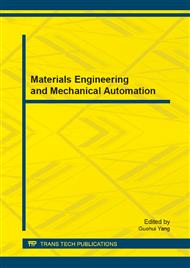p.501
p.507
p.511
p.515
p.520
p.526
p.532
p.538
p.544
Multi-Sensor Life Detection Synergy Platform Design
Abstract:
Life detection based on a single type of information sources detection technology cannot completely meet the needs of the earthquake relief. The existing life detection techniques are include of acoustic wave life detection, optical life detection and radar life detection. The advantages and existing problems of the three life detection techniques are analyzed. The advantages and present situation of multi-sensor detection synergy technique are given . We explained the platform structure , multi-sensor selection strategy, and information fusion model. Finally, the development direction of life detection technique based on multi-sensor synergy is forecasted. This platform mainly realizes the infrared image and acoustic wave synchronization collection, analysis and processing of both audio life detection and video detection function, make up for the deficiency of the single sensor life detector, can get a more comprehensive and more accurate information about the scene of rescue and living organisms, is more suitable for complex quake rescue environment.
Info:
Periodical:
Pages:
520-525
Citation:
Online since:
October 2013
Authors:
Price:
Сopyright:
© 2014 Trans Tech Publications Ltd. All Rights Reserved
Share:
Citation:


